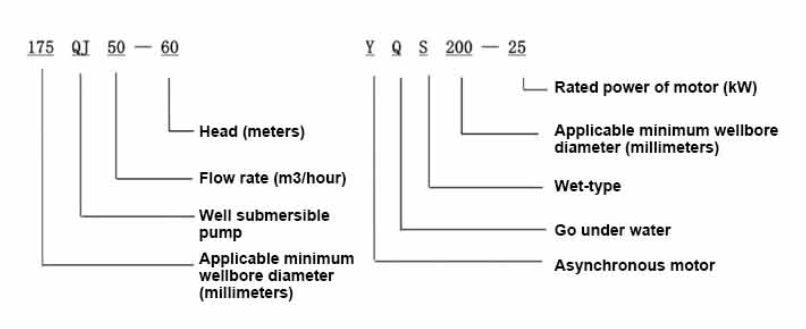Oct . 05, 2024 11:26 Back to list
floating submersible pump
The Emergence of Floating Submersible Pumps A Game-Changer in Water Management
Water management is an escalating challenge in various industries, from agriculture to construction and municipal systems. Traditional pumps often struggle to meet the unique demands of different environments, particularly in locations subject to flooding or where water levels fluctuate significantly. Enter the floating submersible pump—a revolutionary technology that promises to transform how we manage water in diverse settings.
Understanding Floating Submersible Pumps
Floating submersible pumps are designed to operate in bodies of water while remaining buoyant, thanks to their floating structures. Unlike conventional submersible pumps that must be submerged to function, these floating pumps maintain their position in the water, allowing for greater flexibility and mobility. As they can adjust to changing water levels, they excel in environments where traditional pumps might fail due to rising waters.
Key Features and Advantages
1. Adaptability One of the primary advantages of floating submersible pumps is their adaptability to various water bodies, including lakes, rivers, and flooded areas. They can easily be deployed in emergency situations—such as during a flood—to rapidly remove excess water and mitigate damage.
2. Ease of Installation Floating pumps can be installed quickly without the need for extensive groundwork or infrastructure alterations. Their mobile nature means they can be transported and set up in remote or challenging locations where conventional pumps might be impractical.
3. Maintenance Accessibility Maintenance is crucial for any pumping system. Floating submersible pumps often feature design elements that facilitate easier access for servicing. This accessibility reduces downtime and ensures continuous operation in critical situations.
4. Energy Efficiency Modern floating submersible pumps utilize advanced technologies that enhance their energy efficiency. Many models are equipped with variable speed drives, allowing operators to adjust the pump's flow rate based on real-time water needs, saving energy and reducing operational costs.
5. Versatility These pumps can handle various types of fluids, whether clean or contaminated. They are suitable for applications ranging from agricultural irrigation to construction dewatering, making them versatile tools in water management.
Applications Across Industries
floating submersible pump

The potential applications of floating submersible pumps span a wide array of industries
- Agriculture Farmers can leverage floating pumps to manage irrigation more effectively, especially in areas prone to drought or flooding. These pumps help in maintaining optimal water levels for crops.
- Construction In construction sites, floating pumps can dewater excavations and ensure that projects progress smoothly, even during the rainy season.
- Flood Management During natural disasters, floating submersible pumps become invaluable. Their quick deployment can aid in flood relief efforts by draining excess water, protecting homes and infrastructure.
- Environmental Monitoring These pumps can be employed in environmental studies and monitoring programs to manage and maintain the water quality in lakes and rivers by controlling algae blooms and other contaminants.
The Future of Water Management
As climate change continues to impact weather patterns, the importance of effective water management technologies cannot be overstated. Floating submersible pumps represent a forward-thinking approach to addressing water-related challenges. Their design not only enhances usability in difficult water conditions but also aligns with the growing demand for sustainable solutions in various industries.
Moreover, as technology advances, we can expect to see even more innovative features in floating submersible pumps. This could include integration with IoT (Internet of Things) for real-time monitoring and automated operation, further enhancing their efficiency and effectiveness.
Conclusion
In conclusion, floating submersible pumps are more than just a new tool in the water management arsenal; they are a revolutionary solution designed to meet the complex challenges of today's environments. Their adaptability, ease of installation, energy efficiency, and versatile applications position them as a critical component in the future of water management. As industries seek innovative ways to address water issues, floating submersible pumps stand at the forefront, paving the way for a more resilient and sustainable future.
-
Submersible Water Pump: The Efficient 'Power Pioneer' of the Underwater World
NewsJul.01,2025
-
Submersible Pond Pump: The Hidden Guardian of Water Landscape Ecology
NewsJul.01,2025
-
Stainless Well Pump: A Reliable and Durable Pumping Main Force
NewsJul.01,2025
-
Stainless Steel Submersible Pump: An Efficient and Versatile Tool for Underwater Operations
NewsJul.01,2025
-
Deep Well Submersible Pump: An Efficient 'Sucker' of Groundwater Sources
NewsJul.01,2025
-
Deep Water Well Pump: An Efficient 'Sucker' of Groundwater Sources
NewsJul.01,2025
-
 Submersible Water Pump: The Efficient 'Power Pioneer' of the Underwater WorldIn the field of hydraulic equipment, the Submersible Water Pump has become the core equipment for underwater operations and water resource transportation due to its unique design and excellent performance.Detail
Submersible Water Pump: The Efficient 'Power Pioneer' of the Underwater WorldIn the field of hydraulic equipment, the Submersible Water Pump has become the core equipment for underwater operations and water resource transportation due to its unique design and excellent performance.Detail -
 Submersible Pond Pump: The Hidden Guardian of Water Landscape EcologyIn courtyard landscapes, ecological ponds, and even small-scale water conservancy projects, there is a silent yet indispensable equipment - the Submersible Pond Pump.Detail
Submersible Pond Pump: The Hidden Guardian of Water Landscape EcologyIn courtyard landscapes, ecological ponds, and even small-scale water conservancy projects, there is a silent yet indispensable equipment - the Submersible Pond Pump.Detail -
 Stainless Well Pump: A Reliable and Durable Pumping Main ForceIn the field of water resource transportation, Stainless Well Pump has become the core equipment for various pumping scenarios with its excellent performance and reliable quality.Detail
Stainless Well Pump: A Reliable and Durable Pumping Main ForceIn the field of water resource transportation, Stainless Well Pump has become the core equipment for various pumping scenarios with its excellent performance and reliable quality.Detail
